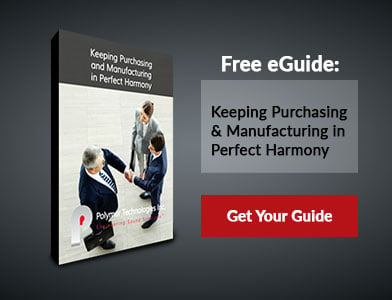
Cellular polymer materials are permeable to some degree, while other manufacturing materials like metals, glass, ceramics and dense loaded vinyls are not. To some, this porous quality may seem like a disadvantage. But that’s not true! Whether or not a material is right for your project comes down to your application.
If you’re looking to control sound through absorbing it and reducing sound pressure buildup within an enclosure or compartment, permeability is one of the most important factors to consider when designing an absorber to reduce excess noise. Permeability is a measure of the degree of openness in a structure. While many factors play a role in an absorber's performance such as stiffness, density and tortuosity, permeability is the most significant factor. Understanding a product’s permeability directly relates to how it will behave acoustically.
Cellular foams, particularly polyurethane foams, are often used for sound control because they have a very complex geometry and can be designed to have optimized acoustical performance. Each individual cell that makes up the foam structure is a 12-sided polyhedron called a dodecahedron. The cells each have 12 pores or sides that can remain open or be covered by a membrane. If at least two cell walls or pores are missing membranes you have an open cell foam. If less than two membranes are missing it is technically a closed cell foam. In any foam there can be varied levels of permeability which varies acoustical performance. Refer to open cell and closed cell foams,for more details about these differences.
The degree of openness in a piece of foam changes the permeability and air flow resistance of the material and alters how it affects sound waves.
How Permeability Improves Sound Absorption

When you’re trying to control noise, it helps to understand the nature of sound and how it performs. Sound waves are pressure waves travelling through a material, generally air. The molecules of air transmit sound energy to each other and through a porous acoustical material. Even if the material has a thin film facing the sound energy, in low to mid frequencies, vibrate the film and transmit the pressure energy across the film and into the foam. For optimum performance the permeability of a faced material will be different than an unfaced material.
To disrupt the ordered movement of the pressure wave/sound wave, one needs to use a material that will impede the sound wave as it travels through the foam. As the molecules of air work their way through the cellular foam, heat is generated that takes energy away from the pressure wave. The ideal degree of foam openness results in an ideal acoustical performance, which is defined as an ideal air flow resistance or permeability for that specific product design.
As pointed out earlier, a product using a protective film facing should have a different permeability than an unfaced absorber. In addition, a properly designed film faced absorber has better acoustical performance at low to mid frequencies than an unfaced absorber. When a facing is properly applied to a soft cellular foam the system has a natural frequency resonance that is at a much higher frequency than plain foam. As this resonance couples with the molecules of the pressure wave more heat gets generated and more sound energy is transformed. This primarily occurs at frequencies below about 1000 hertz (cps).
Remember, energy is never lost, only transformed!
Blocking Sound vs. Absorbing Sound
When you’re looking for a solution to stop excess noise, most people want to either prevent the sound generated within a particular space from leaving or keep sound from entering a specific area. Absorbers and barriers help to control sound in different ways and can be used individually or in combination to block and absorb sound depending on your application.
Acoustic Absorber
 Generally, absorbers are light, soft, highly permeable materials. They are designed to trap and convert sound waves into heat. They soften surfaces and reduce echo in confined spaces. If you want to absorb sound and prevent reverberation, a pillowy, porous material is what you’re looking for.
Generally, absorbers are light, soft, highly permeable materials. They are designed to trap and convert sound waves into heat. They soften surfaces and reduce echo in confined spaces. If you want to absorb sound and prevent reverberation, a pillowy, porous material is what you’re looking for.
Acoustic Barrier
 Composites that are developed to block noise are barriers, and they have no permeability. The mass of the barrier determines how much sound it can block. The barrier needs to have quite a bit of mass, flexibility, and have a low natural frequency resonance to prevent excess sound waves from bypassing the material.
Composites that are developed to block noise are barriers, and they have no permeability. The mass of the barrier determines how much sound it can block. The barrier needs to have quite a bit of mass, flexibility, and have a low natural frequency resonance to prevent excess sound waves from bypassing the material.
Being Flexible When it Comes to Noise Control
Being in control of excess noise takes some ingenuity. At Polymer Technologies, we help OEMs control sound produced from mechanical equipment including motors, generators, and more for many industries. Every application has its unique nuances. Sometimes a project requires an out-of-the-box approach to ensure the acoustic materials are blocking or absorbing sound waves as desired.
Depending on your needs, you can use a combination of barriers, dampers, absorbers, and facings to mitigate excess sound. Most manufacturers often view film facings as a way to protect the integrity of their composites, and while that is true, using the right facing can improve the acoustic performance of the composite as explained above.
Testing for Success
Understanding how a material will perform is critical to the success of any energy management project. Working with a dedicated materials supplier is often the best way to ensure your sound control solution will work as intended. Material suppliers like Polymer Technologies conduct thorough testing of materials during development and understand how certain composites behave.
Choosing a supplier with in-house testing capabilities allows not only for the materials to be evaluated during development, but enables the equipment to be examined. Engines, motors, generators, and pumps need to be tested to assess their acoustical profiles so the best solution can be devised. By understanding the geometry of the equipment inside and out, you can discover the most effective noise control solution.
Finding the Right Solution for Noise Management
Depending on your sound control needs, an absorber, barrier, or a combination of both may be the most effective way to prevent excess noise. Consider talking to a materials expert to discover the best way to tackle your noise control problem at the source.






